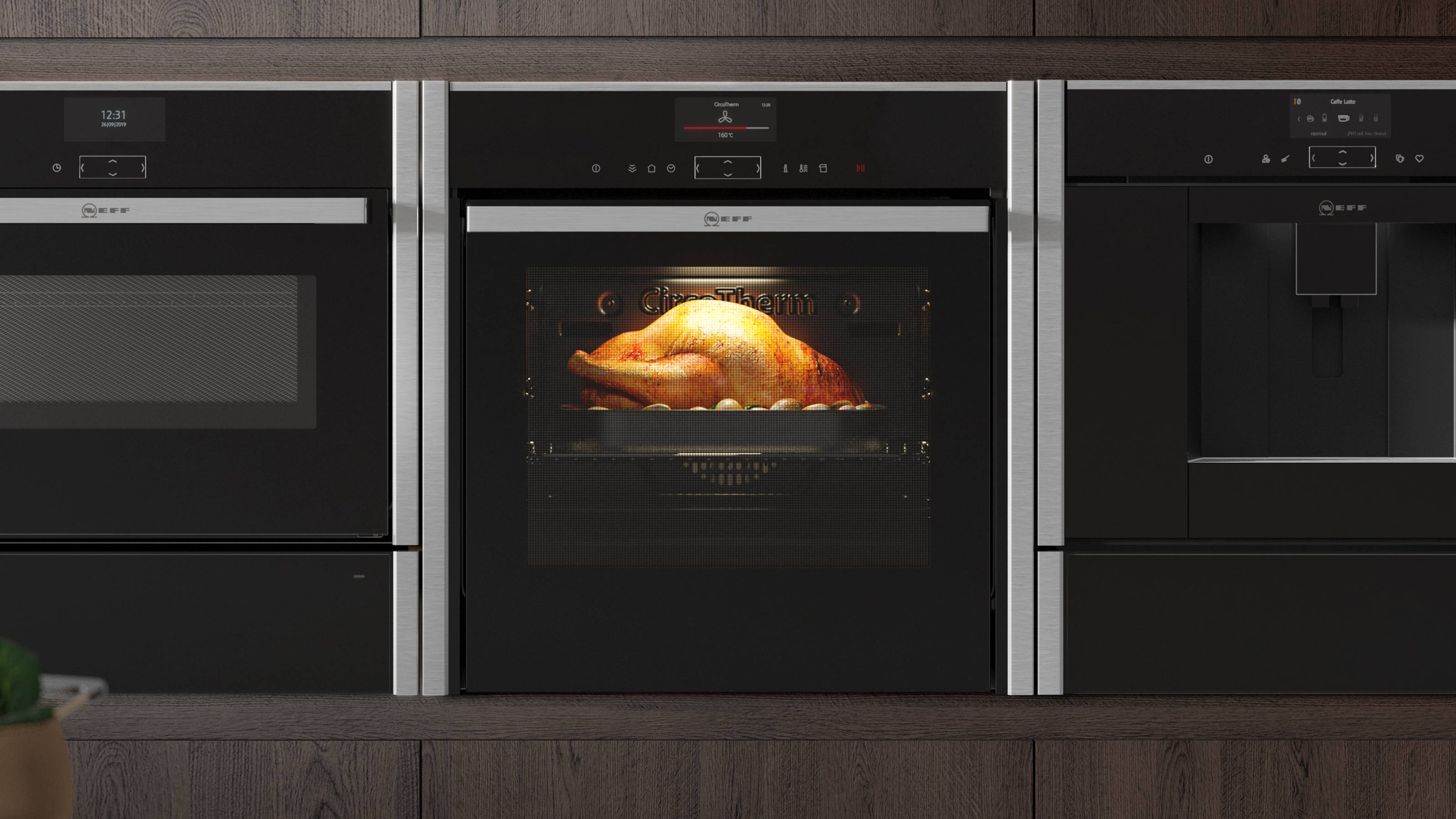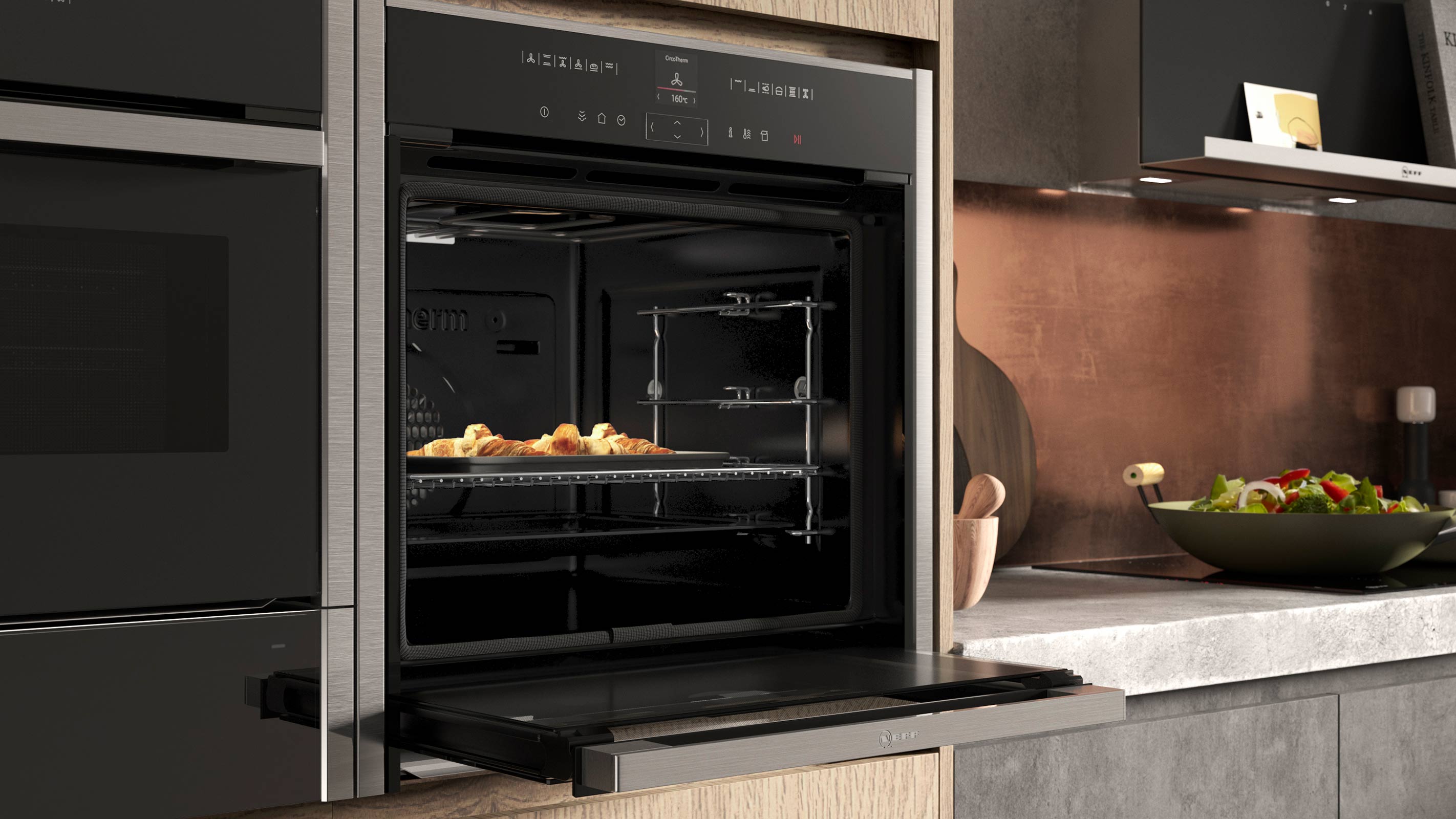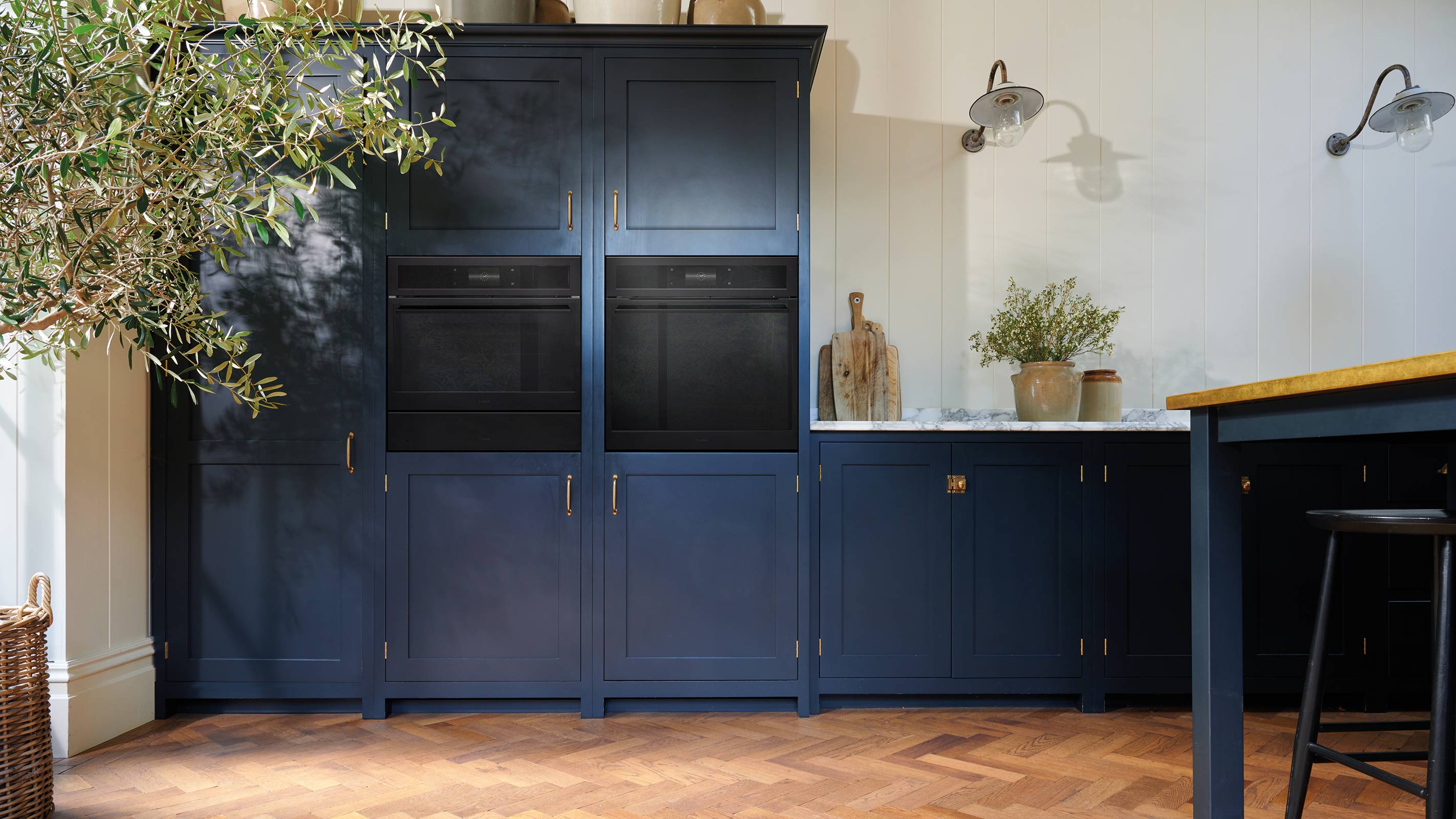What is a pyrolytic oven and do you need one?
Exactly what is a pyrolytic oven and why might you want one? In this guide we take a look at the benefits this type of kitchen appliance could offer you

If you are in the market for a new cooker, you may well be asking ‘what is a pyrolytic oven?’ With so many fancy sounding special features and optional extras now available in the world of kitchen appliances, it can seem like an overwhelming task to start untangling the various terms that get thrown your way when stepping into the world of kitchen design.
Well, you can breathe a sigh of relief if that rings true for you because we are here to take the mystery out of one of the most popular types of kitchen appliance you might find yourself looking at — the pyrolytic oven.
The science behind them and what they can offer is actually not that confusing once you know what they are and how they work. Here, we explain everything you need to know so that you can make the right decision for you and your kitchen.
What is a pyrolytic oven?
Ovens these days come with all kinds of special features and extras meaning that understanding what is what can be pretty mind bending at times. There are ovens that can be operated remotely, steam ovens and even those that sense when food is cooked through — all ideal for those after modern kitchen ideas. And be sure to make sure you check out best kitchen extractor fans too, to install alongside your appliance.
But what about pyrolytic ovens? Quite simply, a pyrolytic oven is one that is self-cleaning, designed to take the hassle out of what is, quite frankly, usually a pretty messy and smelly job.
These ovens, such as this one for £699 from Bosch on John Lewis, usually offer several different cleaning options based on how dirty your oven is and how intense you need the clean to be.
"When you activate the pyrolytic self-cleaning program, high temperatures of up to 485ºC turn all the food residue and grease spatters on the interior of the oven into ash," explains Sue Flowers, Group Marketing Manager at NEFF. "Once the oven has cooled, you can simply wipe the residue away with a cloth.
Bring your dream home to life with expert advice, how to guides and design inspiration. Sign up for our newsletter and get two free tickets to a Homebuilding & Renovating Show near you.
"The whole process takes between one and two hours, depending on the degree of soiling," continues Sue. "On a NEFF oven, there are three cleaning program to choose from: 'light residue' which takes 1 hour 15 minutes; 'medium residue' which runs for 1 hour 30 minutes; and 'intensive cleaning' which takes 2 hours.

What are the benefits of a pyrolytic oven?
Apart from the elbow grease you can save by using a pyrolytic oven, there are a few other advantages to this type of oven, including the fact that you won't need to expose yourself to any pungent and potentially harmful (to both humans and the environment) fumes and chemicals from traditional oven cleaners.
“Pyrolytic ovens are a great way to save time cleaning your oven, says Luke Shipway, Product Manager at Caple. "Simply choose the required cleaning function and let the oven do the work for you — no harsh chemicals required."
If you are looking for energy efficient appliances (and who isn't right now?), you'll be interested to learn that investing in a pyrolytic oven could also help you cut the amount of energy you use when cooking.
"Modern ovens with pyrolytic program are so well insulated that they are very efficient when it comes to electricity usage," explains Sue Flowers.
In addition, many pyrolytic ovens also come complete with other useful functions that share the same technology used for the self-cleaning modes.
"Our C2600 oven utilises this technology to provide our 'Pizza Function'," says Luke Shipway. "It allows you to cook a traditional fresh pizza in less than 3 minutes.”

Are pyrolytic ovens dangerous?
Some people are, understandably, concerned that the very high temperatures achieved by pyrolytic ovens could make them unsuitable in households with young children, but thankfully this should not be an issue.
"Pyrolytic programs are safe to use as the oven door locks while the program is running and four panes of glass on the oven door ensure it remains safe to touch," explains Sue Flowers. "The door lock isn’t released until the program is complete and the residual heat has dropped to a manageable level."
How often should you use the pyrolytic function?
There is actually no need to run the pyrolytic function on these ovens every time you cook — after all, you would be unlikely to clean out the oven after cooking every meal on a standard cooker.
"Pyrolytic cleaning is not intended for regular use, but rather for deep cleans once every six to 12 months, depending on how dirty the oven gets," confirms Sue Flowers of NEFF. "As such, all NEFF Pyrolytic self-cleaning ovens also come with EasyClean, which is a handy in-between clean for lightly soiled ovens. Add water and a drop of liquid detergent to the base pan and the EasyClean program will soften baked-on residue so it can be wiped away."
Are pyrolytic ovens expensive?
These days, pyrolytic ovens are actually pretty commonplace meaning that you should have to pay through the nose to get one. In fact, it is possible to find single oven models for under £300, like this Indesit one for £289 or this Candy one for £309 on AO. Of course, it is also possible to spend thousands of pounds on a top of the range model of the same size, although for this you should expect other features to be included too, such as steam and convection settings, as well as some level of smart technology, like this smart pyrolytic oven that can be operated from your phone from Samsung for £1,899 on John Lewis.
What other special features should I look out for when buying an oven?
In addition to self- cleaning modes there are several other useful functions you should look out for if you are in the market for a new oven. These include:
- Convection heating: Conventional ovens use heating elements on the top and bottom of the oven and are fine if you are cooking food at different temperatures as hot spots are created. Convection ovens, on the other hand, use a fan to spread the heat around evenly — perfect when you are cooking foods all at the same temperature.
- Built-in temperature probes: Ovens with these adjust their temperature automatically to ensure food is cooked through perfectly.
- Steam ovens: These use steam, rather that hot air, to cook food, resulting in beautifully moist end results. Some ovens combine conventional cooking with steam, while others only cook using the steam function.
- Smart ovens: The level of technology used with these ovens varies, but you can expect a smart oven to allow you to control it wherever you are, from an app on your smart devices. They may also detect when food is cooking too fast and adjust the temperature accordingly.
Natasha was Homebuilding & Renovating’s Associate Content Editor and was a member of the Homebuilding team for over two decades. In her role on Homebuilding & Renovating she imparted her knowledge on a wide range of renovation topics, from window condensation to renovating bathrooms, to removing walls and adding an extension. She continues to write for Homebuilding on these topics, and more. An experienced journalist and renovation expert, she also writes for a number of other homes titles, including Homes & Gardens and Ideal Homes. Over the years Natasha has renovated and carried out a side extension to a Victorian terrace. She is currently living in the rural Edwardian cottage she renovated and extended on a largely DIY basis, living on site for the duration of the project.

